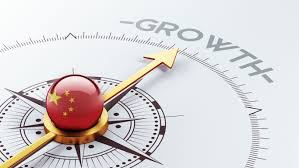
This article examines how China’s growth model has changed and developed since its global economic emergence in the late 1970s, and assesses prospects for China remaining the largest country in purchasing parity terms. Certainly, China has faced many growth transitions as imbalances arose during the phases of reforms, and China has changed the growth model successively to address them, while keeping growth high. However, China’s latest imbalance has persisted since the global financial crisis and is taking longer to address. Internal imbalances arising from credit-and debt-financed investment have overtaken external imbalances from the current account. As a result, since the global financial crisis, as fiscal stimulus rose, and stayed high, and corporate debt doubled, capital efficiency has steadily fallen, with total factor productivity significantly declining and reducing its contribution to overall growth. This reflected China’s rising investment since the crisis being concentrated in less productive sectors such as real estate, and implemented by state-owned enterprises (SOEs) that built excessive capacity in sectors, such as coal, cement and steel. These tensions and imbalances all centre on China’s financial system, that has become large, and opaque, with a proliferation of financial products, and need to be addressed for other structural reforms to take hold, and to sufficiently nurture investment and innovation in globally-surging services sectors. In an important step toward this end, China’s top leadership has recently signaled that it would tighten steps to address financial stability risks by establishing a new Financial Stability and Development Committee under the State Council. How China meets the challenge its growth model now faces is critical for global growth and, equally for China, that also faces the rising reality of changing demographics.
© 2019 ICS All rights reserved.
Powered by Matrix Nodes